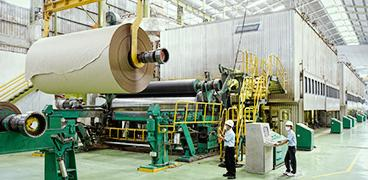
Some things are just so close to us that we often take them for granted. For example, let's take a moment and think about paper. Over the course of history, humans have used paper for so many things: work, communication, creativity, you name it. It's part of our culture and daily lives. But do you really know what it is? Do you know how paper is made? How do we turn wood into sheets that people use every day?
Well, to be more specific, our primary raw material is actually wood fiber. But to obtain that for an industrial scale, we indeed need a lot of trees! So we plant and grow a lot of them in areas that we call industrial forests. After five years, they become so big and mature enough to be harvested. Meanwhile, the new seeds they make can be replanted to start another cycle of growth and harvest, over and over again. Just imagine these plantations as a farm, but bigger!
Harvested wood logs are then transported to our mills, where it will be processed and debarked clean. Since the bark cannot be used in papermaking, we use it instead to create biomass fuel that generates electricity for our mills. As discussed in our previous article, we also use other byproducts for the same purpose. So check it out if you’re interested.
Meanwhile, the debarked logs are then chopped into wood chips and boiled in a giant high-pressure tank. The process there is just like our digestive system, and the results are a soft form of wood fibers wholly separated from other materials and chemicals.
Most of our fiber supply comes from our 38 concessions, nine of which are under our ownership. Additionally, we partner with three community forests to get the raw materials that we need. As seen in our latest report, this plantation-produced wood fiber makes up 48% of our sources, while the rest are recycled and imported from certified sources..
From the last process, a gooey thing we call pulp is formed. At this stage, some of it would be dried into a solid-state and packed for shipping right away. But the rest would be processed further to create paper and all other forms of its derivative products.
This papermaking process consists of two stages that are quite similar in basic principles to the method first used by the ancient Chinese more than 1,900 years ago. The first one, which we call the 'wet end,' is where we dilute the pulp with water to prepare it for the next step. While in the following stage, the 'dry end', that watery "soup" is streamed into a machine that squeezes and presses it into a thin sheet.
The sheet ultimately turns into giant rolls of paper that we would cut into size, according to product specifications. By this point, you can already see the form of paper that we all know and love, but it's not the end of the road. Only after a tight quality screening process these sheets of paper would then be packed and ready to send across the globe.
With an annual combined pulp, paper, packaging product, and converting capacity of over 20 million tons per year, today, we market our products in more than 150 countries across six continents. If you live in one of the countries that we operate in, chances are you already use or at least stumble upon our products at some point.
There you go, that’s how we make paper here at APP. As you can see, we exclusively source our primary materials from plantations and even turn our byproducts into energy to minimize waste. What we haven’t mentioned in this article is that we also help people who live around our concessions to improve their livelihoods through our DMPA program. But you can read one of the stories here.
We do it all as part of our commitment to maintain our sustainable operation and ensure a better future. To learn more specifics about our sustainability efforts in production, you can check our dedicated page here and follow our Instagram or Twitter to get daily updates regarding this matter. See you there!

